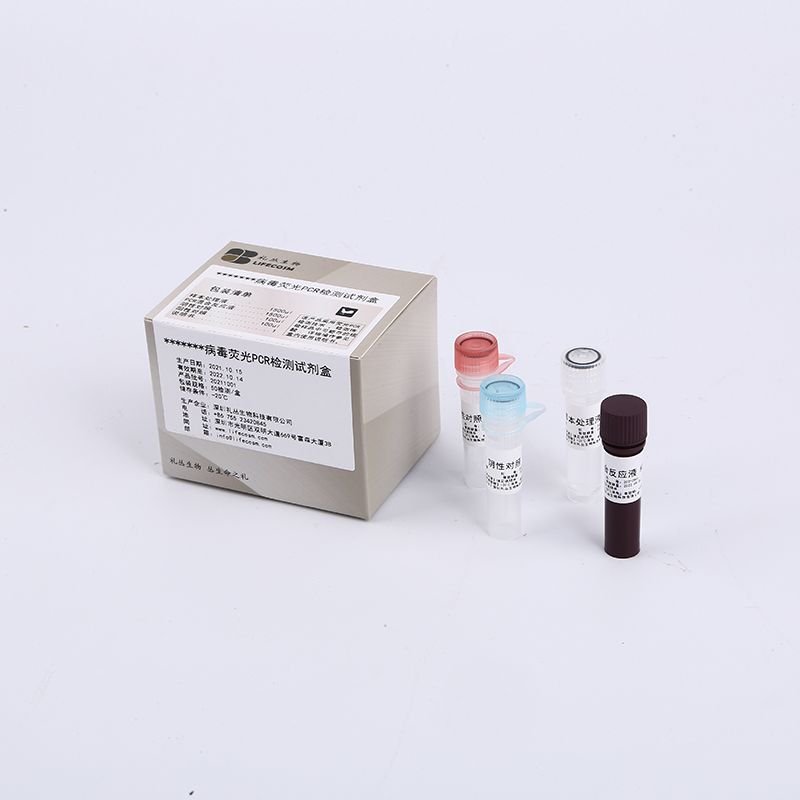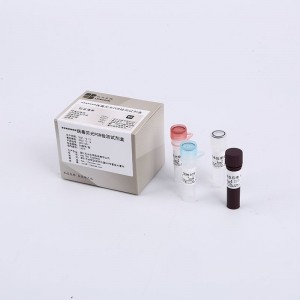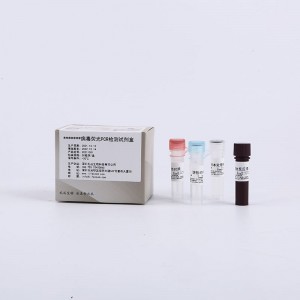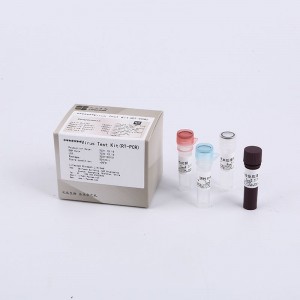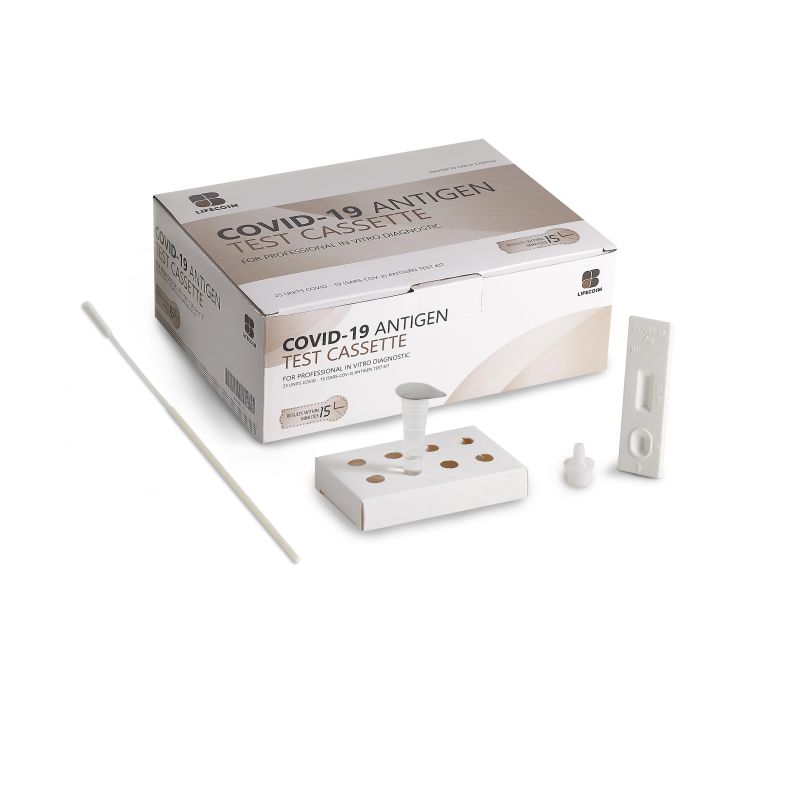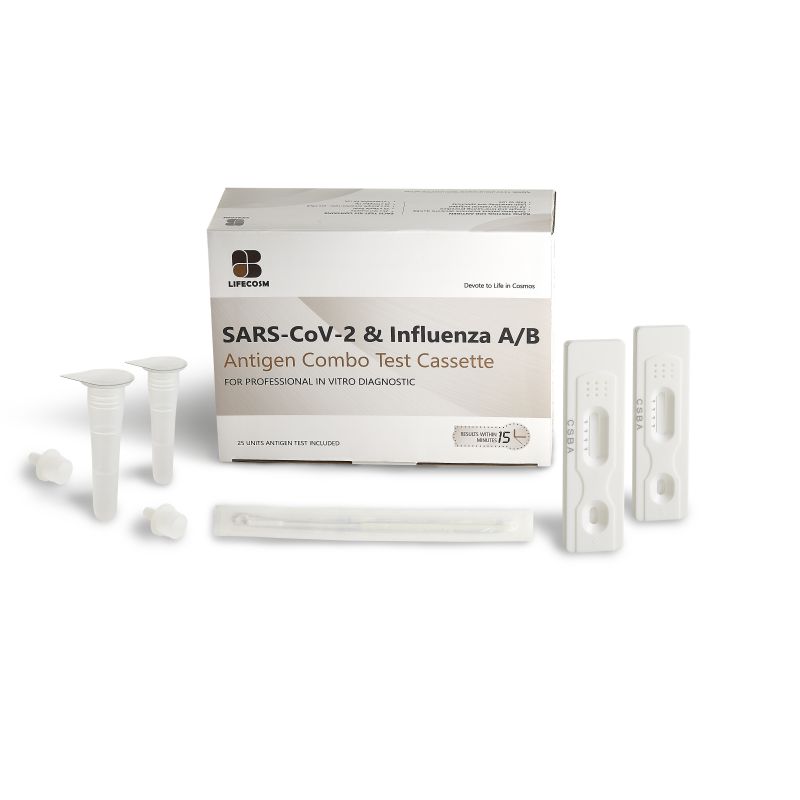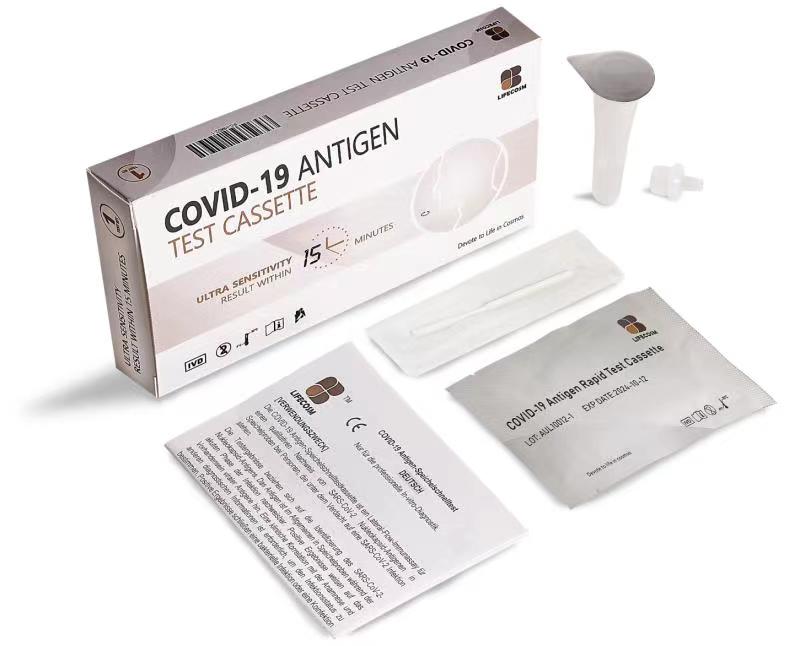
Products
Lifecosm SARS-Cov-2-RT-PCR Detection kit for 2019-nCoV
Expected usage
This kit is used for the qualitative detection of new coronavirus (2019-nCoV) using throat swabs, nasopharyngeal swabs, bronchoalveolar lavage fluid, sputum.The detection result of this product is only for clinical reference, and it should not be used as the only evidence for clinical diagnosis and treatment.A comprehensive analysis of the condition is recommended in combination with the patient's clinical manifestations and other laboratory tests.
Inspection principle
The kit is based on one-step RT- PCR technology. In fact, the 2019 new coronavirus (2019-nCoV) ORF1ab and N genes were selected as the amplification target regions. Specific primers and fluorescent probes (N gene probes are labeled with FAM and ORF1ab probes are labeled with HEX) are designed to detect 2019 new-type coronavirus RNA in samples. The kit also includes an endogenous internal control detection system (internal control gene probe labeled with CY5) to monitor the process of sample collection, RNA and PCR amplification, thereby reducing false negative results.
Main components
| Components | Volume(48T/Kit) |
| RT-PCR reaction solution | 96µl |
| nCOV primer TaqMan probemixture(ORF1ab,N Gene,RnaseP Gene) | 864µl |
| Negative control | 1500µl |
| nCOV Positive contro(l ORF1ab N Gene) | 1500µl |
Own reagents: RNA extraction or purification reagents. Negative/positive control: The positive control is RNA containing the target fragment, while the negative control is nucleic acid-free water. During use, they should participate in the extraction and should be considered infectious. They should be handled and disposed of in accordance with relevant regulations.
The internal reference gene is the human RnaseP gene.
Storage conditions and expiration date
-20±5℃,avoid repeated freezing and thawing more than 5 times, valid for 6 months.
Applicable instrument
With FAM / HEX / CY5 and other multi-channel fluorescent PCR instrument.
Specimen requirements
1.Applicable specimen types: throat swabs, nasopharyngeal swabs, bronchoalveolar lavage fluid, sputum。
2.Specimen collection (aseptic technique)
Pharyngeal swab: Wipe the tonsils and posterior pharyngeal wall with two swabs at the same time, then immerse the swab head in a test tube containing the sampling solution
Sputum: After the patient has a deep cough, collect the coughed sputum in a screw cap test tube containing the sampling solution; bronchoalveolar lavage fluid:Sampling by medical professionals. 3.Storage and transportation of samples
Specimens for virus isolation and RNA testing should be tested as soon as possible. Specimens that can be detected within 24 hours can be stored at 4℃; those that cannot be detected within 24
hours should be stored at -70℃or below (if there is no storage condition of -70℃, they should be
temporarily stored at -20℃refrigerator). Specimens should avoid repeated freezing and thawing during transportation. Specimens should be sent to the laboratory as soon as possible after collection. If samples need to be transported over long distances, dry ice storage is recommended.
Test Methods
1 Sample processing and RNA extraction (sample processing area)
It is recommended to take 200μl of liquid sample for RNA extraction. For related extraction steps, refer to the instructions of commercial RNA extraction kits. Both the negative and negative
controls in this kit were involved in the extraction.
2 PCR reagent preparation (reagent preparation area)
2.1 Remove all components from the kit and thaw and mix at room temperature. Centrifuge at 8,000 rpm for a few seconds before use; calculate the required amount of reagents, and the reaction system is prepared as shown in the following table:
| Components | N serving (25µl system) |
| nCOV primer TaqMan probemixture | 18 µl × N |
| RT-PCR reaction solution | 2 µl × N |
| *N = number of samples tested + 1 (negative control) + 1 (nCOVpositive control) | |
2.2 After thoroughly mixing the components, centrifuge for a short time to let all the liquid on the tube wall fall to the bottom of the tube, and then aliquot the 20 µl amplification system into the PCR tube.
3 Sampling (specimen preparation area)
Add 5μl of the negative and positive controls after extraction. The RNA of the sample to be tested is added to the PCR reaction tube.
Cap the tube tightly and centrifuge at 8,000 rpm for a few seconds before transferring it to the amplification detection area.
4 PCR amplification (amplified detection area)
4.1 Place the reaction tube in the sample cell of the instrument, and set the parameters as follows:
| stage |
Cycle number |
Temperature(°C) | Time | collectionsite |
| Reversetranscription | 1 | 42 | 10min | - |
| Pre-denaturation | 1 | 95 | 1min | - |
| Cycle | 45 | 95 | 15s | - |
| 60 | 30s | data collection |
Instrument detection channel selection: Select the FAM、HEX、CY5 channel for the fluorescence signal. For reference fluorescent NONE, please do not choose ROX.
5 Result analysis (Please refer to the experimental instructions of each instrument for setting)
After the reaction, save the results. After analysis, adjust the starting value, ending value, and threshold value of the baseline according to the image (the user can adjust according to the actual situation, the starting value can be set to 3~15, the ending value can be set to 5~20, adjustment) in the logarithmic graph At the threshold of the window, the threshold line is in the logarithmic phase, and the amplification curve of the negative control is a straight line or below the threshold line).
6 Quauty control(A procedural control is included in the test) Negative control:No obvious amplification curve for FAM, HEX, CY5 detection channelsn
COV positive control: obvious amplification curve of FAM and HEX detection channels, Ct value≤32, but no amplification curve of CY5 channel;
The above requirements must be met simultaneously in the same experiment; otherwise, the experiment is invalid and needs to be repeated.
7 Determination of results.
7.1 If there is no amplification curve or Ct value> 40 in the FAM and HEX channels of the test sample, and there is an amplification curve in the CY5 channel, it can be judged that there is no 2019 new coronavirus (2019-nCoV) RNA in the sample;
.2 If the test sample has obvious amplification curves in the FAM and HEX channels, and the Ct value is ≤40, it can be judged that the sample is positive for the 2019 new coronavirus (2019-nCoV).
7.3 If the test sample has a clear amplification curve only in one channel of FAM or HEX, and the Ct value is ≤40, and there is no amplification curve in the other channel, the results need to be retested. If the retest results are consistent, the sample can be judged to be positive for the new
coronavirus 2019 (2019-nCoV). If the retest result is negative, it can be judged that the sample is negative for 2019 new coronavirus (2019-nCoV).
Positive judgment value
The ROC curve method is used to determine the reference CT value of the kit and the internal control reference value are 40.
Interpretation of test results
1.Each experiment should be tested for negative and positive controls. Test results can only be determined when controls meet quality control requirements
2.When the FAM and HEX detection channels are positive, the result from the CY5 channel (internal control channel) may be negative due to system competition.
3.When the internal control result is negative, if tthe test tube's FAM and HEX detection channels are also negative, , it means that the system is disabled or the operation is wrong, t the test is invalid. Therefore, the samples need to be retested.

